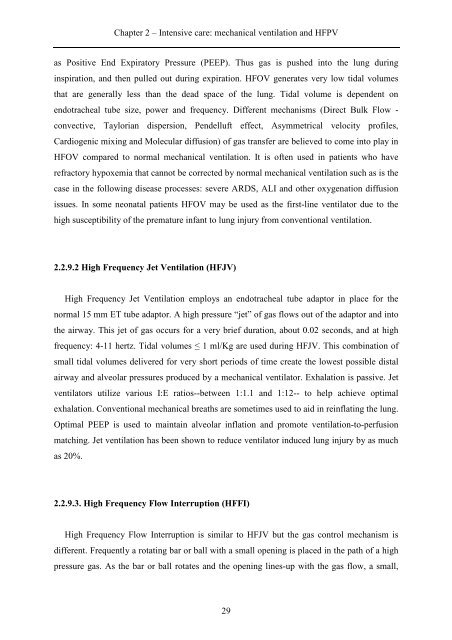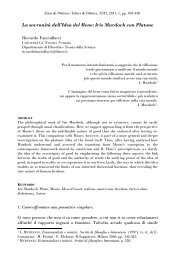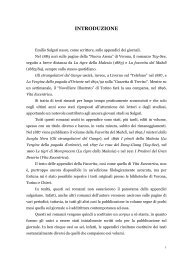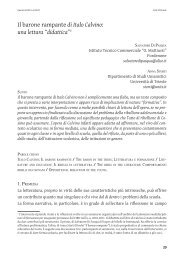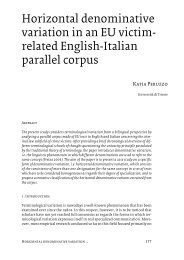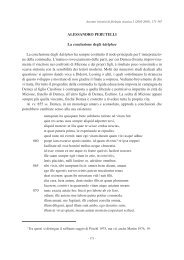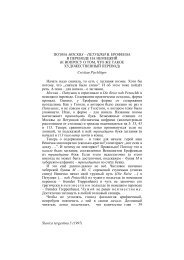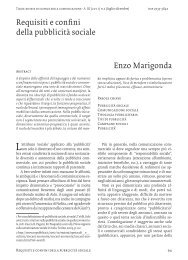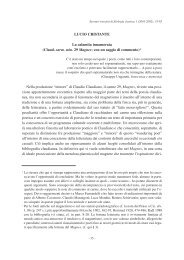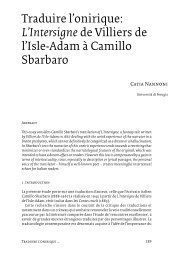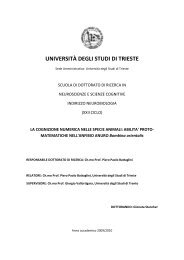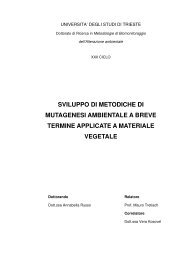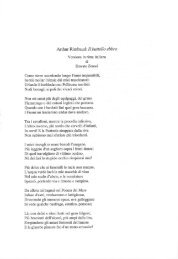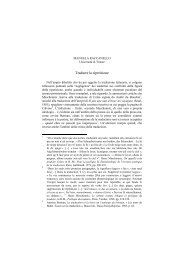UNIVERSITÀ DEGLI STUDI DI TRIESTE - OpenstarTs - Università ...
UNIVERSITÀ DEGLI STUDI DI TRIESTE - OpenstarTs - Università ...
UNIVERSITÀ DEGLI STUDI DI TRIESTE - OpenstarTs - Università ...
You also want an ePaper? Increase the reach of your titles
YUMPU automatically turns print PDFs into web optimized ePapers that Google loves.
Chapter 2 – Intensive care: mechanical ventilation and HFPV<br />
as Positive End Expiratory Pressure (PEEP). Thus gas is pushed into the lung during<br />
inspiration, and then pulled out during expiration. HFOV generates very low tidal volumes<br />
that are generally less than the dead space of the lung. Tidal volume is dependent on<br />
endotracheal tube size, power and frequency. Different mechanisms (Direct Bulk Flow -<br />
convective, Taylorian dispersion, Pendelluft effect, Asymmetrical velocity profiles,<br />
Cardiogenic mixing and Molecular diffusion) of gas transfer are believed to come into play in<br />
HFOV compared to normal mechanical ventilation. It is often used in patients who have<br />
refractory hypoxemia that cannot be corrected by normal mechanical ventilation such as is the<br />
case in the following disease processes: severe ARDS, ALI and other oxygenation diffusion<br />
issues. In some neonatal patients HFOV may be used as the first-line ventilator due to the<br />
high susceptibility of the premature infant to lung injury from conventional ventilation.<br />
2.2.9.2 High Frequency Jet Ventilation (HFJV)<br />
High Frequency Jet Ventilation employs an endotracheal tube adaptor in place for the<br />
normal 15 mm ET tube adaptor. A high pressure “jet” of gas flows out of the adaptor and into<br />
the airway. This jet of gas occurs for a very brief duration, about 0.02 seconds, and at high<br />
frequency: 4-11 hertz. Tidal volumes ≤ 1 ml/Kg are used during HFJV. This combination of<br />
small tidal volumes delivered for very short periods of time create the lowest possible distal<br />
airway and alveolar pressures produced by a mechanical ventilator. Exhalation is passive. Jet<br />
ventilators utilize various I:E ratios--between 1:1.1 and 1:12-- to help achieve optimal<br />
exhalation. Conventional mechanical breaths are sometimes used to aid in reinflating the lung.<br />
Optimal PEEP is used to maintain alveolar inflation and promote ventilation-to-perfusion<br />
matching. Jet ventilation has been shown to reduce ventilator induced lung injury by as much<br />
as 20%.<br />
2.2.9.3. High Frequency Flow Interruption (HFFI)<br />
High Frequency Flow Interruption is similar to HFJV but the gas control mechanism is<br />
different. Frequently a rotating bar or ball with a small opening is placed in the path of a high<br />
pressure gas. As the bar or ball rotates and the opening lines-up with the gas flow, a small,<br />
29


